You are using an out of date browser. It may not display this or other websites correctly.
You should upgrade or use an alternative browser.
You should upgrade or use an alternative browser.
:D Genetic Preservation :D - Breeding
- Thread starter acespicoli
- Start date
acespicoli
Well-known member
Abstract
Two kinds of drug-type Cannabis gained layman’s terms in the 1980s. “Sativa” had origins in South Asia (India), with early historical dissemination to Southeast Asia, Africa, and the Americas. “Indica” had origins in Central Asia (Afghanistan, Pakistan, Turkestan). We have assigned unambiguous taxonomic names to these varieties, after examining morphological characters in 1100 herbarium specimens, and analyzing phytochemical and genetic data from the literature in a meta-analysis. “Sativa” and “Indica” are recognized as C. sativa subsp. indica var. indica and C. sativa subsp. indica var. afghanica, respectively. Their wild-growing relatives are C. sativa subsp. indica var. himalayensis (in South Asia), and C. sativa subsp. indica var. asperrima (in Central Asia). Natural selection initiated divergence, driven by climatic conditions in South and Central Asia. Subsequent domestication drove further phytochemical divergence. South and Central Asian domesticates can be distinguished by tetrahydrocannabinol and cannabidiol content (THC/CBD ratios, ≥7 or <7, respectively), terpenoid profiles (absence or presence of sesquiterpene alcohols), and a suite of morphological characters. The two domesticates have undergone widespread introgressive hybridization in the past 50 years. This has obliterated differences between hybridized “Sativa” and “Indica” currently available. “Strains” alleged to represent “Sativa” and “Indica” are usually based on THC/CBD ratios of plants with undocumented hybrid backgrounds (with so-called “Indicas” often delimited simply on possession of more CBD than “Sativas”). The classification presented here circumscribes and names four taxa of Cannabis that represent critically endangered reservoirs of germplasm from which modern cannabinoid strains originated, and which are in urgent need of conservation.Wow, nice landing page
Am excited to see what you guys will offer.
Links etc on Kwik Seeds not working for me. This is as it should be atm?
Namaste
 for some reason that site is was disabled, not sure why it belongs to others
for some reason that site is was disabled, not sure why it belongs to othersMaybe when the stop by we will know more
acespicoli
Well-known member
A Novel Approach to Cannabis Conservation
Establishing a Virtual Core Collection
Additional approaches have been developed to enhance the management of ex situ seed genetic resource collections. These include the establishment of core collections, which represent the range of genetic diversity for a species with minimal repetition (Brown, 1989). Whilst core collections contain a subset of the genetic resources for a species, they do provide an enriched source of diversity, enabling efficient genepool characterization and utilization (Brown, 1989; Odong et al., 2013). We propose that an international core collection of Cannabis be established from existing gene banks comprising up to 400 accessions collected from diverse geographical regions. Based on theoretical studies of natural populations (Lawrence et al., 1995a), in ex situ collections this should represent 99% of allelic polymorphisms for alleles that occur at species-wide frequencies >2% (Lawrence et al., 1995b). Having established an initial core collection, more comprehensive empirical testing could employ methods which use pairwise comparisons of allele frequencies of the core to guide the inclusion or exclusion of additional accessions (Thachuk et al., 2009; Odong et al., 2013).
Major barriers to the immediate development of a centralized physical core collection for Cannabis, include the lack of publicly accessible seed banks (Sawler et al., 2015) and the limitations on import, export, and transfer of seed between sovereign states that are signatories to the United Nations 1961 Single Convention on Narcotic Drugs and the 1971 Convention on Psychotropic Substances (Nutt, 2015; Pain, 2015). Nevertheless, this need not prevent the generation and exchange of data, nor the development of internationally agreed nomenclature and characterization standards, as well as the establishment of a “virtual” core collection and associated online data repository. Indeed, considering these obstacles, the in silico management of genetic resources and development of a commonly shared database containing detailed passport, meta-, and characterization-data, together with a coordinated distribution system, may be a necessity for ex situ Cannabis conservation, and even facilitate the commodification of privately managed germplasm collections as a pre-breeding resource.

Frontiers | A Belated Green Revolution for Cannabis: Virtual Genetic Resources to Fast-Track Cultivar Development
Cannabis is a predominantly diecious phenotypically diverse domesticated genus with few if any extant natural populations. International narcotics convention...
REVIEW article
Front. Plant Sci., 29 July 2016
Sec. Plant Breeding
Volume 7 - 2016 | https://doi.org/10.3389/fpls.2016.01113
A Belated Green Revolution for Cannabis:
Virtual Genetic Resources to Fast-Track Cultivar Development
Share size for research 50 seeds for maintaining strain no less than 200 seeds
Requirement for large batch is that it must be re-shared at 200 seeds min atleast once relisted as available
...
Or as many as is possible considering crop failures
acespicoli
Well-known member

PMC full text:
Front Plant Sci. 2016; 7: 1113.
Published online 2016 Jul 29. doi: 10.3389/fpls.2016.01113
Table 2
Summary of Cannabis germplasm resources reported within the literature.Cannabis genetic resource collection | Location | Link | Online database | References |
|---|---|---|---|---|
Centre for Plant Breeding and Reproduction Research (CPRO) | Netherlands-Wageningen | n/a | ||
Ecofibre Global Germplasm Collection | Australia, Queensland | n/a | Welling et al., 2015 | |
HortaPharm B.V., Amsterdam, Holland (now merged with GW pharmaceuticals) | Netherlands, Amsterdam | n/a | n/a | |
Institute of Natural Fibers and Medicinal Plants (INF&MP) | Poland-Poznan | Mankowska and Silska, 2015 | ||
Istituto Sperimentale per le Colture Industriali (CRA-ISCI) | Italy, Bologna | |||
Leibniz Institute of Plant Genetics and Crop Plant Research (IPK) | Germany, Gatersleben | |||
National Cannabis Collection (NCC) | Hungary, Tápiószele | Simon, 2006 | ||
Research Institute of Crop Production (RICIP; owned by AGRITEC Ltd) | Prague, Ruzyne | |||
Vavilov Research Institute (VIR) | Russia-St Petersburg | |||
Yunnan Academy of Agricultural Sciences (YAAS) | China, Kunming | n/a |
acespicoli
Well-known member
http://91.151.189.38/virdb/ Vavilov
acespicoli
Well-known member
Breeding techniques
Thread starter Nevil
Start date Dec 24, 2010
[IMG alt="Nevil"]https://mrnice.nl/forum/data/avatars/m/3/3977.jpg?1592314629[/IMG]
People keep asking me questions relating to breeding techniques (teks). It's an important subject worthy of a special thread. There are a number of useful breeders on the forum, this could be educational for us all.
N.
This thread is backed up on my drive , just kept N's gems...
I should be adding Nevil's insights here?
For a backup ?
Thread starter Nevil
Start date Dec 24, 2010
[IMG alt="Nevil"]https://mrnice.nl/forum/data/avatars/m/3/3977.jpg?1592314629[/IMG]
Nevil
Breeder
Dec 24, 2010 #1People keep asking me questions relating to breeding techniques (teks). It's an important subject worthy of a special thread. There are a number of useful breeders on the forum, this could be educational for us all.
N.
This thread is backed up on my drive , just kept N's gems...
I should be adding Nevil's insights here?
For a backup ?
acespicoli
Well-known member
acespicoli
Well-known member
Extensive cultivar details terpene etc click links
Last edited:
acespicoli
Well-known member

Accumulation of bioactive metabolites in cultivated medical Cannabis - PubMed
There has been an increased use of medical Cannabis in the United States of America as more states legalize its use. Complete chemical analyses of this material can vary considerably between producers and is often not fully provided to consumers. As phytochemists in a state with legal medical...
acespicoli
Well-known member
heath robinson Well-known member
Joined Nov 4, 2004
Last seen Nov 9, 2018
Heaths latest tree grow
Hello ICmag its been a while since I made a post here and to make up for my lack of activity over the last 6 years here is my latest tree grow. She is my own creation Rez Sour Diesel IBL x UK cheese = Chiesel, I dont know the final yield just yet as she is drying as we speak. hope you like
- heath robinson
- Thread
- Jul 12, 2010
- Replies: 756
- Forum: Indoor Grows - Hydro

acespicoli
Well-known member
Good news ApeOrigin has done a reproduction of blue hemps thai
They have them over at cannapot atm as well as some other classic by the same
ApeOrigins Thaifun Horizon Description


Thaifun Horizon is one of the legendary outdoor-strains that was created by Bluehemp Genetics in Switzerland at the early century, this one is pure Thai of best quality. But this landrace is a very special one that was attapted to Suisse area, it is a pure one but it is much faster as other sativas from Thailand. The flavour is strong but not too strong, it reminds on sweet n sour thaigras from the 70s, absolutely delicious and mouthwatering - but beware, even if the smell is not very strong, this pure sativa offers a massive power that is not easy to handle, you will think you are on a magic carpet ride.
This ...
ApeOrigin is the union of ApeGenetics and Originseeds - a new breedercollective located all over the world with the target to reproduce medicinal, old, legendary and rare strains and landraces as well. Every breeder has his own individual target - creating strains for outdoor- or indoorgrowers. The collective tries to offer more and more rare strains in future - especially landraces which are not available anywhere else.

ApeOrigin :: Breeder Info & Cannabis Strains
ApeOrigin is the union of ApeGenetics and Originseeds - a new breedercollective located all over the world with the target to reproduce medicinal, old, legen...
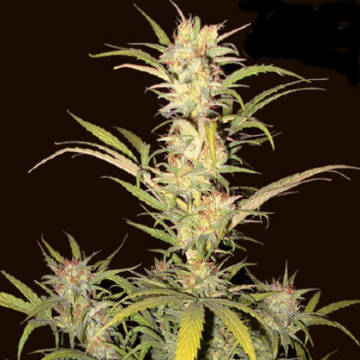
Cannapot Onlineshop SLU - Thaifun Horizon (Bluehemp repro)
Thaifun Horizon is one of the legendary outdoor-strains that was created by Bluehemp Genetics in Switzerland at the early century, this one is pure Thai of best quality. But this landrace is a very special one that was attapted to Suisse area, it is a pure one but it is much faster as other...
and if you get some holdme down on the f2
got to much thai weed going on right now but it would be nice to hold on to for summer
Really a struggle not to buy these up....hopefully someone does and shares them around
Does the growth pattern look sativa thai ?
10/ $28 its like a sore

ApeOrigin - rare cannabisseeds, cheap but with real high quality
A Breedercollective with the target to reproduce medicinal, old, legendary and rare strains and landraces as well - creating strains for outdoor- and indoorgrowers.
Last edited:
acespicoli
Well-known member
acespicoli
Well-known member
Herbarium Specimen Details - ISB: Atlas of Florida Plants
The Atlas of Florida Plants provides a source of information for the distribution of plants within the state and taxonomic information. The website also provides access to a database and images of herbarium specimens found at the University of South Florida and other herbaria.
| Family Name: | Cannabaceae | |
| Currently Accepted Name: | Cannabis sativa L. - Determined By: E. Small, Aug 1975 | |
| Locality: | Canada. Ontario Prov. Garden, Central Experimental Farm, Ottawa. 43º 15’ 51” N -79º -52’ -31” W | |
| Description: | Some plants of this stock monoecious. | |
| Reproductive State: | Fertile | |
| Notes: | CULTIVATED; population number 265, plant number 2; planted June 1, 1971; mean population cannabinoid content in leaves and flowers (if available) of male plants: CBD: 0.23%, THC: 0.0%; source: Dr. P. Kapos, Research Institute for Medicinal Plants, Gyogyoveny Kutato Intezet, Budakalasz, Hungary; (CV. "Unico/Masculine"). | |
| Collector: | E. Small s.n. | |
| Date: | 12 Aug 1971 | |
| Accession No: | 123182 | |
| Image: | 123182.jpg | |
| Plant Atlas Link: | Plant Atlas Citation |
acespicoli
Well-known member
Abstract and Figures
After a century of banishment, both euphoric (“marijuana”) and non-euphoric (“industrial hemp”) classes of Cannabis sativa are attracting billions of dollars of investment as new legitimate crops. Most domesticated C. sativa is very tall, a phenotype that is desirable only for hemp fibre obtained from the stems. However, because the principal demands today are for chemicals from the inflorescence and oilseeds from the infructescence, an architecture maximizing reproductive tissues while minimizing stems is appropriate. Such a design was the basis of the greatest short-term increases in crop productivity in the history of agriculture: the creation of short-stature (“semi-dwarf”), high-harvest-index grain cultivars, especially by ideotype breeding, as demonstrated during the “Green Revolution.” This paradigm has considerable promise for C. sativa. The most critical dwarfing character for breeding such productivity into C. sativa is contraction of internodes. This reduces stem tissues (essentially a waste product except for fibre hemp) and results in compact inflorescences (which, on an area basis, maximize cannabinoid chemicals) and infructescences (which maximize oilseed production), as well as contributing to ease of harvesting and efficiency of production on an area basis. Four sources of germplasm useful for breeding semi-dwarf biotypes deserve special attention: (1) Naturally short northern Eurasian wild plants (often photoperiodically day-neutral, unlike like most biotypes) adapted to the stress of very short seasons by maximizing relative development of reproductive tissues. (2) Short, high-harvest-index, oilseed plants selected in northern regions of Eurasia. (3) “Indica type” marijuana, an ancient semi-dwarf cultigen tracing to the Afghanistan-Pakistan area. (4) Semi-dwarf strains of marijuana bred illegally in recent decades to avoid detection when grown clandestinely indoors for the black market. Although the high THC content in marijuana strains limits their usage as germplasm for low-THC cultivars, modern breeding techniques can control this variable. The current elimination of all marijuana germplasm from breeding of hemp cultivars is short-sighted because marijuana biotypes possess a particularly wide range of genes. There is an urgent need to develop public gene bank collections of Cannabis.Genetic Resources and Crop Evolution
Dwarf and Semi Dwarf spontanea var.
The Brotherhood of Eternal Love - Wikipedia
Last edited:
acespicoli
Well-known member
Discontinuation of the Phylos Plant Sex Test and Genotype Test
The Phylos Plant Sex Test and Genotype Test are no longer accepted for processing as of September 30, 2021. Full customer account access, sex test results, and genotype reports will all remain available through our website for the foreseeable future.
Due to the complexity of the 3D Galaxy data visualization tool and the discontinuation of testing services and related resources, the interactive Phylos Galaxy is no longer available to explore. For an example of the interactive 3D Galaxy, check out our videos on YouTube.Final Galaxy dataset upload
Our latest (and last) Galaxy public dataset has been published in the European Bioinformatics Institute (EMBL-EBI) archives. The European Variation Archive (EVA) is an open-access database of all types of genetic variation data from all species.We believe the foundational knowledge of the cannabis genome can be advanced and better understood by sharing this incredible data we have collected for the Galaxy. To download all public Phylos-collected genotype data, visit EBI’s archive.
For frequently asked questions or to contact us, please send us a message through our chat pop-up in the bottom right of your browser. A full list of our support articles can be found in our Support Portal.
Important Links
- Access your test results
- Download genotype data from EBI
- Read our data policy
- Plant Sex Test product page
- Genotype Test product page
When COVID-19 hit, we found that our products and services were affected in ways we could not anticipate or control: including increasing lab supply costs and supply shortages with unpredictable delivery dates. Today, even though COVID-19 public health conditions are improving, increasing lab supply costs and shortages are continuing.
We also saw market conditions change this past year: Increased demand for feminized seeds has resulted in a decrease in demand for sex testing services.
After careful consideration of how we can best serve our customers, we decided to focus our efforts on optimizing seed-grown varieties and continuing to build knowledge of the cannabis genome with our research and development program. Unfortunately, this means that the 2021 season was our last year to offer testing services.
If you are a testing customer and have questions, we are here for you and are happy to walk you through this transition. Contact our Customer Support Team at 503-206-6599 EXT 1 or email us at [email protected].
acespicoli
Well-known member
Former Phylos Bioscience Employee Sheds Light on Breeding Controversy
An ex-employee of Phylos Bioscience comes forward after convincing breeders and growers to trust in the impartiality of the company.
May 15, 2019


Former Phylos Bioscience Employee Sheds Light on Breeding Controversy
He believes they're bullshitting the people that brought them up.
The Script
“Hello, folks! Hope everybody’s had a pleasant morning. My name is Ricky, and I’m here today from Phylos Bioscience.”Many of you in the grower and breeder communities who are reading this met me under exactly these circumstances. I smiled at you, shook your hand. I answered your questions with austerity and confidence, gained your trust, followed up on the phone, shared laughs and grow stories, tragedies and drug war nightmares. And I even fulfilled your orders for the Phylos Genotype kit, compiling a vast blueprint of your genetics and charting them in the Galaxy, the largest genomic map of cannabis worldwide.
I reassured you time and again, hundreds of times daily: “We are not out to steal your work. We are here to help you protect it, to prove prior art. We’re a different type of cannabis company. We fucking hate Monsanto. We fucking hate Monsanto. We fucking hate…” and on and on.
The Flip
Within the last three weeks, a side of the company has come to public light that calls all of this into question. What I helped build was merely a pawn for a horribly different endgame. I helped build an unparalleled data set of the cannabis genome, paid for by an eager public, to help the company build barriers to entry for anyone else who breeds. I helped establish my employers in a dominant and unfair competitive position for this new venture with an eye towards becoming the industry’s number one acquisition target for Big Ag.And in the end: I am so, so sorry to you all. I genuinely believed I was doing the right thing. I’ve never believed more deeply in what I was doing, nor been bamboozled so fully. I’d like to speak to this, and if I can’t right my wrongs here at least give some thoughts on how the community can move forward independent and strong.
Phylos Bioscience Starts as Testing Facility for Breeders
In case you’re new to this story and its many twists and turns, here’s the nuts and bolts: Phylos built their name as a testing facility, creating a super-cool 3D map of the Cannabis genome called the Galaxy. For depth of information, ease of use and simple visual appeal: it’s unrivaled in the world, truly an accomplishment to be cherished proudly and applauded by any bioinformatician anywhere. Phylos set themselves up as a guardian of people’s genetic work, helping growers and breeders establish a prior timetable of when they had their genetics before the inevitable wave of patents and big ag attorneys looming on the horizon start to rewrite the rules of what belongs to whom.For years they had a page on their website titled “Tools for Breeders”. This dealt with developing marker-assisted selection, a technology where the specific mutation points on an organism’s DNA code are tracked and understood, then that data used to inform and accelerate traditional breeding. This isn’t GMO, where a CRISPR machine is used to rewrite sections of the plant’s basic DNA. This is simply kicking traditional breeding into overdrive: with a pre-grow genetic roadmap, a breeder could use this tech to decide which seedlings out of a crop will carry the traits they’re looking for; all of a sudden you’re looking at bringing ten plants full term instead of potentially hundreds of thousands, saving time and labor and resources and farmland.
All in all, this promised better, more refined traditional agriculture for the community and a safeguard against private labs under the direction of a multibillion-dollar ag company steamrolling us all out of existence. A level playing field, an honest and even shot for so many small and underground growers who suffered for so long in our drug war: truly a paradigm shift in agriculture with the potential to ripple outwards into the wider web of what we grow, how we grow it and in essence who we are as a culture and species.
This was one of the things that really attracted me to the company, and one of the reasons I’m so sad to see them go the way they have: a breeding program could have been introduced to the public as a series of tools to develop and further their own work. As it goes, this was simply not to be.
Phylos Bioscience Announces In-House Breeding Program
They made their fateful announcement on Instagram on April 9th: an in-house breeding program, one that by definition would not only be stiff competition for any other breeders of industrial hemp or craft flower but most likely bury with the tech they’ve gathered and perfected. Imagine if all the umpires in baseball got together and said they were starting their own team, putting the full weight of their support behind it. Should the other teams, or the general public for that matter, trust them when they tell us they’re not competing, that they just want to contribute to the love of the game?This was the quandary Phylos presented with their public statement. True, they’d be paying royalties to the original breeders of the building blocks they started with. But they kept repeating it, over and over in the comments section: we’re not going to compete with you. At best it was patronizing and to this day it remains unfounded. And people got…really, really mad.
Community Responds with Outrage
Between the low-level emoji trolls, loud-mouthed blowhards, cannabis influencers and well-meaning, erudite responders who clearly had a much more solid grasp of genetics and science than the company was giving them credit for: it was an unmitigated shitshow. There were the most horrible names, from “Corporate fucking chads” to the worst you can imagine. There were ignorant pitchfork-wielding yokels spouting pseudoscientific nonsense, there were numerous physical threats.On the occasion that somebody would ask for clarification or a more complete picture of what might be happening with the data they submitted, the slightest optimism in their sentiment was met with some of the heaviest ridicule I’ve witnessed anywhere, anytime. Everybody took their piece of the big bad scientists and their reputation. It was awful for me to watch; like a dream home you spent a year building reduced to cinders quicker than you could comprehend.
They tried to salvage the situation with form responses to comments, a public statement from their PR person (turns out “You know what? I AM a suit. But I think I’m a pretty good one.” …is not a delicate statement when your intent and role in the industry is being called into question), but the community was relentless. They made a second IG post and a post on their website’s blog, attempting to clarify the first but eerily avoiding some of the deeper questions being asked of them. They did what they could to speak to “how scary this must be” for Everyone involved. Some were pacified by this. Most remained skeptical at best.
Phylos Founder Vows to Replace Modern Varieties of Cannabis
Almost immediately afterward, a video of one of their founders giving a presentation was unearthed, speaking at the Benzinga Cannabis Capital Conference in Miami in February. The term “smoking gun” almost doesn’t do it justice: like many of us who had worked with Phylos in the field, and myself more poignantly than most having worked directly for them, put my name behind them, gone to bat for them with my honor and my word… it was really, really hard to watch. I had to go through it several times over several days just to believe what I was hearing. I cried through a lot of it, puked at one point. It couldn’t possibly be real.“All the cannabis that’s around now will be replaced by varieties that will be optimized and specialized, and we’re going to be the company that makes those.”
“We have huge barriers to entry protecting us.”
“It would be impossible for anybody else to collect this data set.”
“Cultivators can’t do real breeding on their own.”
“Our core business is plant breeding, we had to build two other businesses to support that…so we built an entire testing business to create all that data.”
“We have a really unusual advisory board. They are not there for show… Ron started and ran a couple of seed companies that he sold to Syngenta, he worked for Syngenta for years and is now the CEO of a spin-out company from there. And Barbara until recently was the VP of technology acquisition for all of Dow / DuPont. So, having these guys around is just critical for us, because we’re building a company that is ultimately going to be acquired by that universe.”
It was suddenly, starkly clear that the brass at the top of the company didn’t give a shit about the community they had built themselves up on the hopes and aspirations of. Actually, truly the case that they looked down on that community and the breeder’s art they’ve carried, for decades, risking everything as “a quaint, rural hobby that maybe farmers get into.”
Supporting Big Ag over Craft Cannabis
Since then, their reputation is on fire and the trolls of the internet have decidedly unleashed themselves. Almost as painful to me as watching their credibility disintegrate has been tracking the body of grotesque, virulent, often badly-uninformed and occasionally decidedly ignorant vitriol being espoused in their direction and that of anybody who supports them, or wants to, for any reason, no matter how rational the rationale.Things seem uncertain at best for their standing in our community. For being the most dedicated, passionate and capable team of people I’ve ever worked with, in any industry: they’ve chosen to support Big Ag over craft botanists, money over the community. They had a real, solid chance with one of the most valuable crops on Earth as it emerges into full marketplace acceptance to stand with the right people, change the way the game of agronomics is played. Instead, they took the money. They fucking blew it.
Worst of all: they set back the trust of the cannabis community in science, possibly by years, until a stable and reliable alternative can present itself. We need to advance and evolve if we’re to survive the coming onslaught of Corporate Weed. It is not guaranteed that we’ll retain control of our culture or our plant, and with this development things just got darker for us all.
A Word of Advice to Phylos
That all being said, I’d like to give a couple of points of unsolicited advice to the folks at Phylos. Maybe they’ll listen, maybe not: all the same I hope that one way or another they take some time to address their tone-deafness on many key points and publicly raised concerns surrounding their announcement. Who knows? Maybe they’ll surprise me in a way that works for everybody. I can’t help but hold out hope.First of all, stop talking about “How ‘scary’ this must be” for the community. The term that more accurately describes your recent behavior is “insulting”. Here’s why: the language you’re using indicates a complete lack of understanding and empathy for a group of humans who have endured generations of legal persecution, social stigmata and violent crime. I personally have had friends lose their freedom, their possessions, their families, been lined up against a wall and executed – all for the love of this plant.
This is far from an isolated experience. If you think you’re “scaring” the devoted, hardworking community who had the guts and integrity to build this culture during prohibition that you’re now attempting to appropriate and sell off to big ag, you’ve got another goddamned thing coming. You clearly have no idea who you’re talking to, nor what they’ve endured to get here: we’re in this because we ARE this, past present and future. Check yourselves.
Secondly, you need to state, clearly, what side of the business you’re on. You can’t simultaneously use the lab experience the breeder community has paid you to build, sell yourself off to the biggest fish that waltzes into your bank account and expect to continue enjoying support from the community.
You want to sell out? Fine. But quit acting like you’re not competing with the rest of the industry. Referring back to suggestion #1: it’s insulting. This isn’t a question of a small group of bad actors being really mean and hateful on Instagram, nor is it a question of nuance and context in your communications. Stop bullshitting the people who got you here.
Moving Forward as a Community
To the community at large: we need to take a moment right now. We need to assess, to reflect, to adapt and overcome. There are clearly some mammoth changes coming our way and everything our predecessors have fought and died for is being coveted and actively taken from us by greedy businesspeople who did nothing to help our plight when it really mattered.As a community, we need a common legal language and framework that breeders can use to protect their work.
We need a scientific community that’s open source, fully transparent and works for everybody equally. We need to support this with personal research, communication and our dollars.
As consumers, we need to support crop diversity and the ability of small farmers to innovate and drive our industry by making our purchasing choices reflect those ethics.
When we get burned, we pick ourselves the fuck back up and keep moving. Given what we’ve survived so far: this is just another bump in the long, strange trip. Not to worry, we’re gonna WIN this thing. Better goddamned well believe it, Y’all.
With peace, love and respect for everyone involved,
-Dick Fitts
Last edited:
acespicoli
Well-known member
The truth is: you can't raise your own sustainable flock of Cornish Cross chickens, because you can't breed them on your own. That can be really hard to hear, especially for those of us who have made it our life's work to figure out how to do hard things for ourselves.Oct 23, 2022
acespicoli
Well-known member
Ross 308
The Ross 308 satisfies the demands of customers who require a bird that performs consistently well and has the versatility to meet a broad range of end product requirements.
The Ross 308 breeder produces a high number of eggs combined with good hatchability to optimize chick cost in situations where broiler performance is important.
The Ross 308 is recognized globally as a broiler that will give consistent performance in the broiler house. Integrated and independent producers value the growth rate, feed efficiency and robust performance of the Ross 308.
The Ross 308 is available as a fast- or slow-feathering bird.
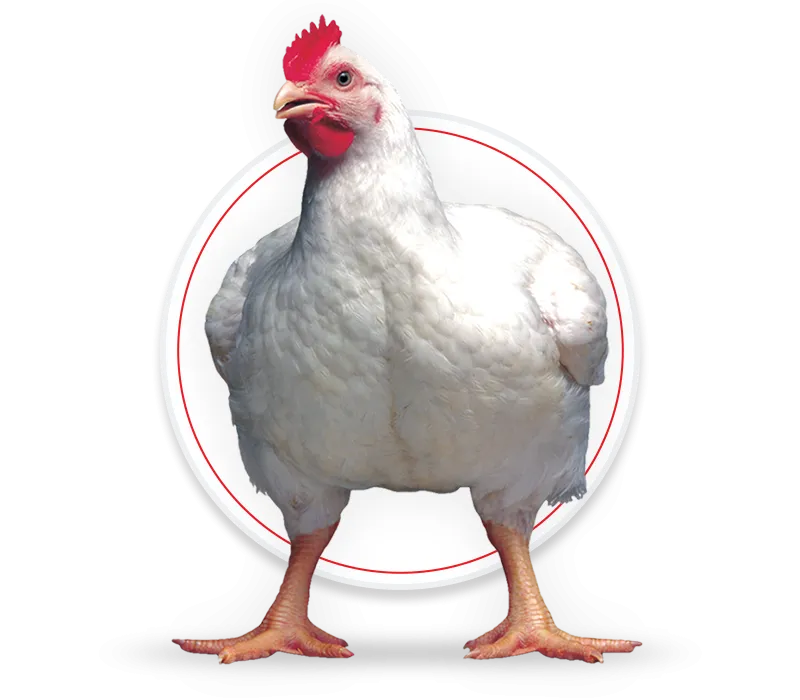
The performance objectives included here are reflective of the economic drivers and stocking densities typical of parent stock production operations within Europe which influence flock cycle planning and management techniques. This typically involves adopting a breeder management strategy which provides first light stimulation at or before 21 weeks of age (up to 146 days of age), which differs to the strategy recommended in other regions of the world.
Document Downloads
Ross 308 / Ross 308 FF Parent Stock
- Parent Stock Handbook
- Parent Stock Pocket Guide: Rearing
- Parent Stock Pocket Guide: Production
- Parent Stock Management Supplement - Fast Feathering
- EU Parent Stock Performance Objectives
- EU Parent Stock Performance Objectives - Fast Feathering
- EU Parent Stock Nutrition Specifications
- EU Parent Stock Nutrition Specifications - Fast Feathering
Ross 308 / Ross 308 FF Broiler
acespicoli
Well-known member
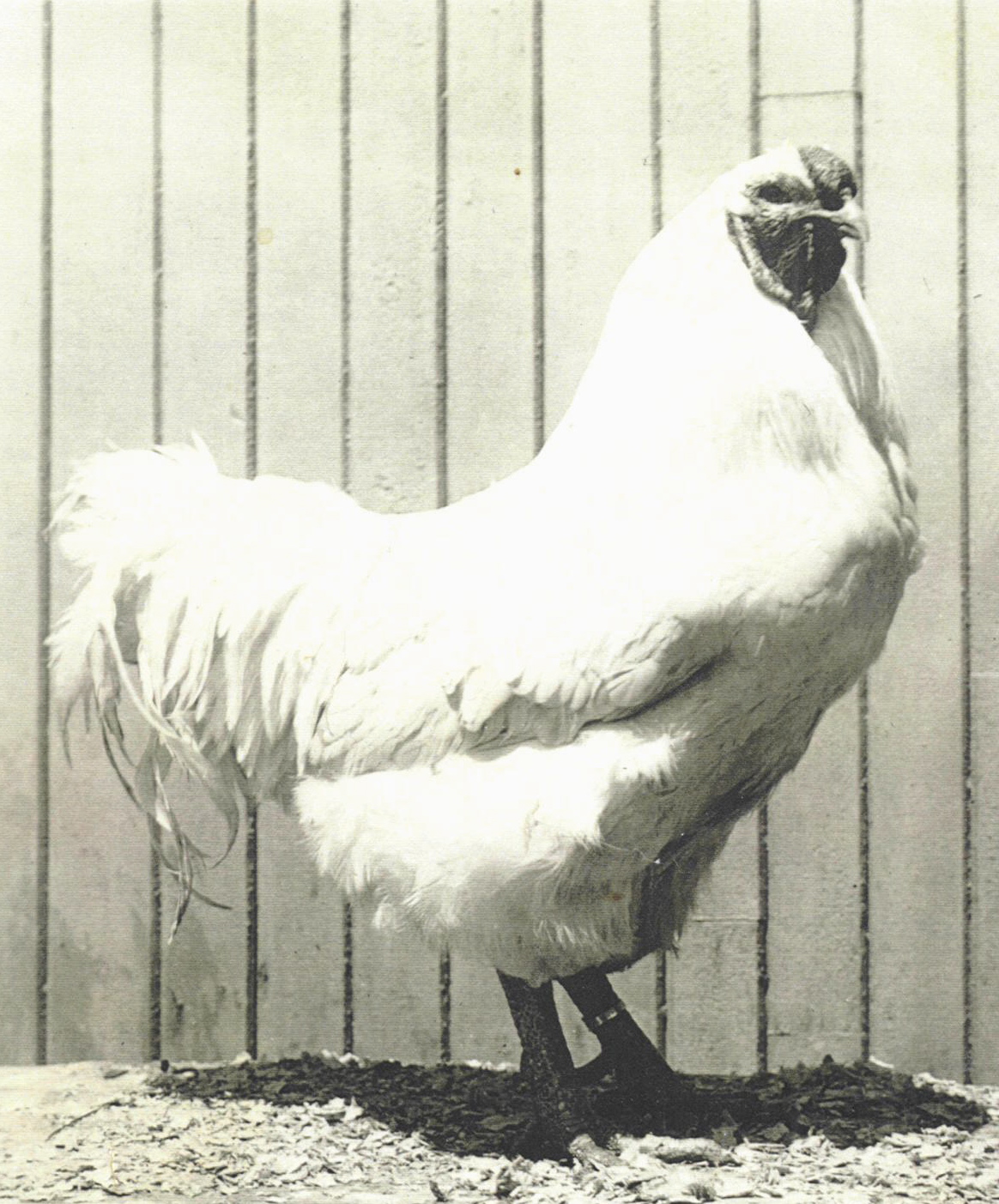
Chantecler chicken - Wikipedia
From Wikipedia, the free encyclopedia
Chantecler| Classification | |
|---|---|
| Traits | |
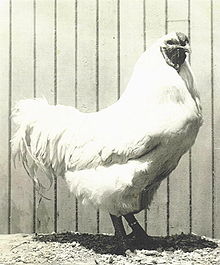
A White Chantecler rooster at the Abbey of Notre-Dame du Lac in 1926; today's Chanteclers have much smaller wattles | |
| Conservation status | critical |
| Country of origin | Canada |
| Use | dual-purpose breed |
| Weight |
|
| Skin color | yellow |
| Egg color | brown |
| Comb type | cushion |
| APA | American[1] |
|
History
At the dawn of the 20th century, no breeds of chicken had been established in Canada, and Canadian farmers and poultry fanciers only had fowl of European and American derivation. This fact was noted by Brother Wilfrid Châtelain, a Trappist monk and Doctor of Agronomy, as he toured the poultry flocks of the Oka Agricultural Institute, an agricultural school at his abbey which is affiliated with the Université de Montréal.[2]In 1907, the Brother set out to remedy this void and create a practical chicken that would be suited to Canada's climate and production needs. Working at the Abbey of Notre-Dame du Lac in Oka, Chantelain first combined Dark Cornishes, White Leghorns, Rhode Island Reds, White Plymouth Rocks and White Wyandottes, creating the White variant of the Chantecler. It was admitted into the American Poultry Association's Standard of Perfection in 1921.[3] By 1918, the breed was presented to the public. To this day, the Chantecler is one of only two breeds of poultry from Canada, and the only one known to have been created primarily by a member of a monastic order.[4]
At the outset, it was only intended for the breed to be white in color; white birds are preferred for commercial meat production in the West, as they produce a particularly clean-looking carcass. In the 1930s, the Partridge Chantecler was generated by crossing Partridge Wyandottes, Partridge Cochins, Dark Cornishes, and the rose comb type of Brown Leghorns to produce a chicken more adapted to free range conditions. This variant was admitted to the Standard in 1935.[2] There has also been a Buff variety present since the 1950s, but it has never been admitted to show standards.[3]
In 1979, the extinction of the Chantecler was publicized, with what was thought to be the last rooster of the breed dying at the University of Saskatchewan's Department of Animal and Poultry Science. However, despite the disappearance of the breed in institutional and commercial hatcheries, it was still maintained by a few small farms.[4] In the 21st century, the breed persists, but is listed as Critical by the American Livestock Breeds Conservancy.[2]
Characteristics
 A White Chantecler hen at the Abbey in 1926
A White Chantecler hen at the Abbey in 1926The Chantecler is a large chicken that lays respectably well and is a good meat producer. Roosters weigh around 9 pounds (4.1 kg), and hens are 6.5–7.5 lb (2.9–3.4 kg).The breed possess yellow skin and beaks, and lay brown eggs. With plumage that lies tight against the body but has a good deal of fluff, and an exceptionally small cushion comb and wattles, the Chantecler is one of the most cold hardy chickens. They are gentle birds amenable to taming, but can be temperamental in confinement.[3]
acespicoli
Well-known member
Weirdo the Cat-Killing Superchicken
Weirdo was a giant among chickens. He weighed a colossal twenty-three pounds — about four times the size of an average rooster. Throughout much of the 1970s and 80s, he was listed in the Guinness Book of Records as the heaviest chicken in the world. He was said to have the strength and stamina of an ostrich.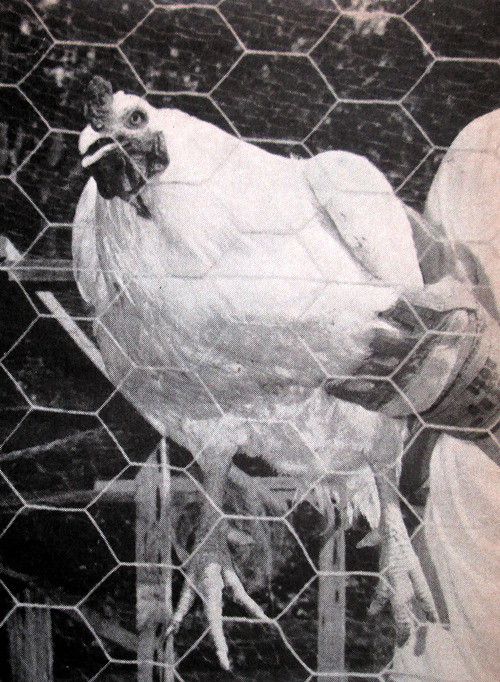
"Grant Sullens holds his prize 23-lb. White Sully rooster. Note the gloves he is wearing for protection. Note also that the photographer stayed on the safe side of the fence." Source: Farm Journal - Nov 1971.
However, Weirdo had a temper and ferocity that matched his size. His violent exploits were legendary. He killed two cats and pecked out the eye of a dog. He routinely tore bits of metal off his feed bucket, demolishing feeders at a rate of one per month. When an ungloved visitor made the mistake of trying to touch him, he removed their fingertip. He shattered the lens of a camera. And, in his crowning achievement, he managed to rip through a wire fence and attacked and killed one of his own sons, an eighteen-pound rooster.
Just as unusual as Weirdo himself was the story of how he came to exist. He was the result of a seven-year chicken-breeding program conducted by a teenage boy, Grant Sullens, of West Point, California. Sullens had decided that he wanted to create a breed of "superchickens," and he actually achieved his goal, succeeding where highly paid poultry researchers had failed.
Creating Superchickens
The superchicken story began in 1964 when Sullens' father was playing a game of dice in a saloon. He won the game, but his opponent didn't have enough money to cover the bet. So instead he offered Sullens Sr. three hundred leghorn chickens. Sullens accepted the chickens, took them home, and gave them to nine-year-old Grant, telling him, "Feed 'em or get your tail warmed."
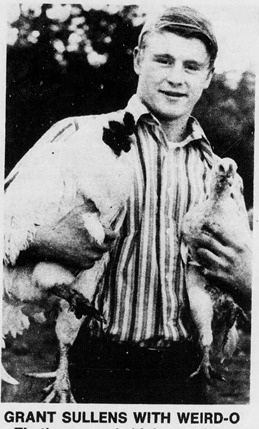
Sedalia Democrat - Sep 2, 1973
The chickens stayed in a pen outside the Sullens' West Point home, but the first winter half of them froze to death. This made young Grant wonder whether it would be possible to breed hardier chickens that could withstand the cold winters in the Sierra Nevadas. So without any prior experience, he launched into his amateur chicken-breeding program.
Grant didn't have much in the way of equipment — just a microscope and some tin-can incubators. But with help from his high school agricultural advisor, he began crossbreeding seven different strains of chickens, including Rhode Island Reds, Plymouth Rocks and Austrian Cross Whites. He never revealed the exact mix of chickens he used, both because he wanted to keep this a trade secret and because he didn't keep detailed records.
Five years later he had created the superchicken. He called the new breed the "White Sully," after himself.
Grant boasted that his White Sullies were superior to other fowls in almost all ways. They grew fast and big. Their meat was solid but tender. They didn't develop cancers or show any signs of imperfection in their bone structure. They were impervious to weather. The hens continued to lay big eggs in both hot summers and cold winters. And finally, they seemed immune to disease.
The one catch was that the superchickens were mean. Really mean — both the roosters and the hens.
But Sullens thought their aggression could potentially be a benefit, since farmers wouldn't need to worry as much about predators. He even envisioned their use as "watch-chickens," noting that a watch-chicken would be better than a watchdog, since it would not only protect the house, but also lay eggs.
The Birth of Weirdo
Weirdo, the King of the Superchickens, was born in 1970. Grant noted that the egg he came from was heavier and rounder than any other egg he'd seen, and after laying the egg, Weirdo's mother never laid another again, as if too worn out by the effort.
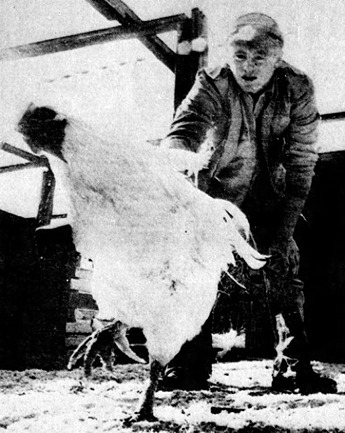
"Grant Sullens, West Point, Calif., keeps a safe distance from 'weirdo.'" Sedalia Democrat - Jan 29, 1973
Weirdo grew faster and bigger than any other rooster. When he was only eighteen weeks old he was already being mistaken for a three-year-old rooster.
Grant explained that he named him Weirdo "because what else could you call something like that."
Weirdo was built like a tank. Sullens said, "I've kicked this rooster, hit him with a feed bucket, and slugged him when he got me down, but I haven't hurt him one bit." Weirdo returned the favor by causing Grant to have eight stitches.
But the constant fighting took a toll on Weirdo. By the age of three, he was pretty well beaten up, with his comb almost entirely gone. However, he remained as tough and mean as ever.
Selling Superchickens
Grant had high hopes for his superchickens. He imagined that the breed would revolutionize chicken production and help feed the starving people of the world. "They aren't just oddities," he insisted. "They're real meat producers."
However, Grant didn't want to breed them himself. By 1973 he was finishing high school and wanted to get out of chicken raising so that he could attend college. So he tried to find a buyer.
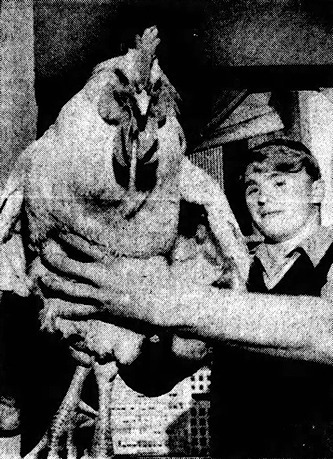
"Grant Sullens, 17, of West Point, Calif., breeder of the 'Superchicken' Weirdo, holds up the 16-pound, 8-ounce son of Weirdo, Ralph, during an interview in New York City."
Kingston Daily Freeman - Feb 14, 1973
As the word spread about Weirdo and the superchickens there was a lot of interest — but mostly from the media. Reporters flocked to his home to take pictures of Grant with his strange, hyper-violent chickens.
However, the chicken industry remained standoffish. One problem might have been that the chicken industry was already plagued by overproduction. So the idea of breeding even bigger birds (that had serious behavioral issues) didn't interest many farmers.
Also, the chicken industry may have had a hard time taking Grant's superchickens seriously. Grant's father claimed, "They can't believe a young boy has done what they haven't been able to do with sophisticated research facilities."
Grant did receive offers from people who were interested in buying his superchickens to use as fighting birds, but he turned these offers down. It doesn't appear that he received any offers from commercial chicken breeders.
The Fate of the Superchickens
After 1973, Grant and his superchickens fell out of the news. It's not clear what became of Weirdo, or the White Sully breed. Only a few scraps of information can be found.
For instance, in 1980 the filmmaker Errol Morris wrote up a treatment for a movie titled Weirdo, to be about "Grant Sullens: the developer of the super-chicken." But the movie never got made.
And around 1990 the Guinness Book of Records recognized a chicken named "Big Snow," owned by Ronald Alldridge of Australia, as the new heaviest chicken in the world. Big Snow was none other than a White Sully. So at some point some of Grant's superchickens evidently made their way to Australia.
After that, the trail goes cold.
On Internet message boards frequented by chicken enthusiasts, occasionally someone will still ask for information about White Sullies. Are there any still around? Does the breed still exist? To date, their questions remain unanswered.




